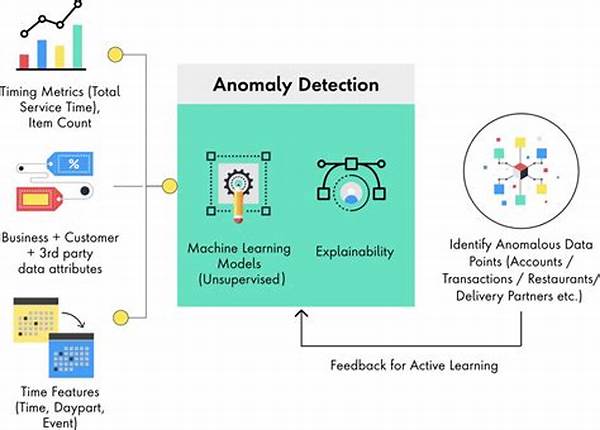In a world where cyber threats are becoming increasingly complex and sophisticated, businesses, governments, and individuals are urgently seeking cutting-edge solutions to protect their digital assets. Enter anomaly detection techniques in security—a revolutionary approach that promises to be a game-changer in the world of cybersecurity. Imagine a system vigilant enough to alert you about suspicious activities before they escalate into full-blown crises. Sounds too good to be true? Allow us to delve into this fascinating subject, unraveling its intricacies and showcasing its potential to redefine security paradigms.
Anomaly detection, at its core, is the practice of identifying rare occurrences, incongruities, or patterns that deviate from expected behavior. In cybersecurity, these deviations could signal unauthorized access, data breaches, or any form of malicious activity. The key to effective anomaly detection lies in its ability to learn from data, adapt to changes, and continuously evolve, thus providing robust security solutions tailored to diverse environments. This technology is not just a staple in cybersecurity protocols; it’s the silent sentinel that ensures businesses run smoothly without unexpected disruptions.
One might wonder, why are anomaly detection techniques in security becoming the talk of the town? The answer lies in their proactive stance. Unlike traditional security measures that often react after a breach occurs, anomaly detection techniques act as preemptive guards. They consistently monitor network traffic, user behaviors, and system performances to pinpoint unusual activities in real-time, allowing for immediate corrective measures. Imagine a security guard who doesn’t sleep, doesn’t take breaks, and has eyes everywhere—this is essentially what advanced anomaly detection offers.
The Advantages of Anomaly Detection Techniques
Anomaly detection techniques are heralded for their unparalleled ability to detect threats that traditional security measures often overlook. They adapt to new data patterns, refining their accuracy over time. This adaptability is essential in keeping pace with hackers who continuously innovate and alter their tactics to outsmart conventional defenses. They are like chameleons, seamlessly adjusting to new environments to safeguard assets more effectively.
Moreover, the integration of artificial intelligence and machine learning has elevated these techniques to an entirely new level. Through constant learning, they discern between legitimate and malicious actions, reducing false positives and minimizing alert fatigue among security teams. Furthermore, these systems can prioritize alerts, bringing the most pressing threats to the forefront, ensuring they are tackled promptly. Imagine being able to prioritize important alerts at the push of a button—that’s the magic of modern anomaly detection.
Key Techniques in Anomaly Detection
Machine Learning Techniques
Machine learning techniques have become central to anomaly detection in security, given their ability to handle vast and complex datasets. Supervised and unsupervised learning, both branches of machine learning, have applications in anomaly detection. Supervised learning is where the system learns from a labeled dataset to distinguish between normal and suspicious activities. It’s akin to teaching a dog new tricks using treats—reinforcing positive behavior.
Unsupervised learning, on the other hand, does not require labeled datasets. Instead, it identifies hidden patterns and clusters in data to detect anomalies. It’s much like an artist creating a masterpiece by identifying and blending colors in the perfect balance. Together, these approaches form a robust framework for identifying anomalies in network traffic or application performance, leading to fortified security postures.
Summary Points: Anomaly Detection Techniques in Security
Conclusion
Embarking on a journey with anomaly detection techniques in security is akin to investing in a reliable ally for your cybersecurity needs. With the promise of real-time threat detection and adaptive learning, these techniques stand as bulwarks against the tide of ever-evolving cyber threats. From chameleonic adaptability to prioritization of critical alerts, they offer a comprehensive shield that protects assets while ensuring peace of mind. Organizations seeking to bolster their defenses should embrace these techniques as integral components of their security arsenals.
Exploring More Anomaly Detection Techniques
Behavioral Analysis
One of the standout aspects of anomaly detection techniques in security is behavioral analysis, a sophisticated method that involves scrutinizing individual user behaviors to identify potential threats. Imagine receiving an alert when your friend starts acting suspiciously out-of-character; behavioral analysis does exactly this but within digital networks. By creating a baseline of normal activities and meticulously monitoring deviations, it ensures that even the most discreet malicious activities are caught in their tracks, protecting sensitive information from prying eyes.

